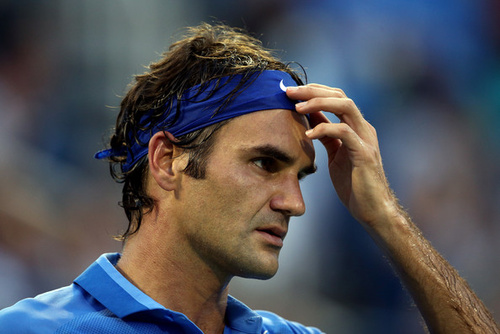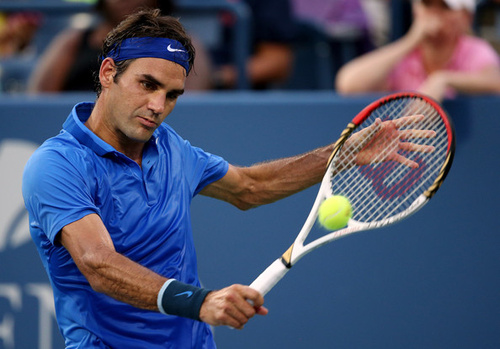Don't miss any stories → Follow Tennis View
FollowSearching for Vinegar: How Roger Federer Can Revive His Career
In science classes throughout the nation, many young students are instructed as to how to develop a model volcano. The typical ingredients necessary to spark and simulate a colorful eruption are food coloring, baking soda, and vinegar. There are other ingredients that you can use to tinker with the experiment, but the volcano will not erupt without adding vinegar as the final component.
Roger Federer’s 2013 season has been much like an ongoing volcano experiment. He has attempted to add multiple ingredients to a formula that would hopefully amplify his level of play. Unfortunately for the Swiss, he has not quite found his vinegar.

After losing to the unheralded Sergiy Stakhovsky in the second round of Wimbledon, Federer went back to the drawing board. He entered two clay court tournaments following Wimbledon, an act suggesting that he was looking for answers wherever he could find them. In addition, he converted to a racket with a 98-square-inch head, eight square inches larger than the frame he typically uses.
After unsuccessful performances in those clay tournaments, Hamburg and Gstaad, Federer took several weeks off to recoup his mind and to deal with a back injury. After he nearly defeated Rafael Nadal in Cincinnati, many thought that the Swiss had found his vinegar.
But this glimmer of positivity was quickly erased as Federer was handily defeated in the fourth round of the US Open by Tommy Robredo in straight sets. In what serves as a good indication of the extent of Federer’s woes, Robredo had never defeated Federer in any of their 10 prior meetings.
Now the question is what can Federer do now? Is he out of options? Has time simply taken its toll?
Well, as Federer has proved time and time again throughout his career, it is most unwise to count him out. There have been an unfortunate quantity of matches where an unfortunate quantity of people proclaimed that Roger Federer was done as a contender. Among them are the 2009 Australian Open final, 2010 Wimbledon quarterfinal, 2011 Wimbledon quarterfinal, and every key match that he has lost in 2013.
Many people would argue, justifiably so, that 2013 is not merely an aberration, but rather the beginning of a permanent downward trend. Given Federer’s history, though, it seems illogical to make any far-reaching conclusions.
What I will argue is that there are a few areas in Federer’s game that are in dire need of fixing.
First among them are break points. In his fourth-round US Open loss to Tommy Robredo, Federer was abysmal on break points, only capitalizing on two of the 16 opportunities that he was provided throughout the duration of the match. Safe to say, this is not a new problem for Federer. In the 2008 Wimbledon final, he converted only a single break point of 13 in five sets.
Federer’s mindset on break points has traditionally been more of a conservative mindset which lies in stark contrast to the ruthless offense that we are accustomed to seeing in those situations. Establishing a more fearless approach toward break points should pay dividends, especially against the top men.

Illustrating this conservative approach on break points, Federer botched many second-serve returns against Robredo on break points. His second-serve return, which is almost always a backhand because opponents serve to that side on key points, may be the weakest shot in his repertoire. The Swiss prefers to chip it back rather than to flatten it out, which often leads to short balls for his opponents to pounce on. It can be an effective shot when struck well, but Federer does not come up with the goods often enough with this type of return to warrant its constant use.
More generally, Federer would benefit from a racket with a larger frame. His small hitting zone gives him a miniscule margin for error. If even one component of Federer’s forehand or backhand goes astray, his chances of striking the ball cleanly are significantly reduced. He could alter this equation by increasing the size of his racket head and as a result would be hitting more clean balls and shanking less. Federer might also want to consider switching to a lighter frame to give him more time to get around to the ball. This is important because the Swiss does not possess quite the same racket head speed as he did in the past.
Another way that Federer could reduce his shanking woes would be to reduce the quantity of his groundstrokes. In other words, he could shorten the points by reaching the net earlier and more often. Not only does Federer have a spectacular serve, but he is also excellent at moving forward. As his body is able to accept and deal with less and less stress, moving forward and ending points quickly on a more frequent basis may preserve his body and elongate his stay on tour.
Moving toward the end of 2013, it will be absolutely vital for Federer to find as many outlets as possible to stay aggressive while protecting his health. Ironically, those goals may prove to coincide and also may turn out to be Federer’s vinegar.










